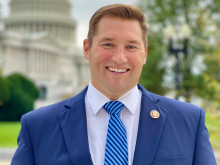Crystal Gayle- Crystal was inducted into the Grand Ole Opry as a member in January 2017 by her sister Loretta Lynn. The Academy of Country Music recognized Crystal with a 2016 Cliffie Stone Pioneer Award for her lifetime achievements in country music. And in 2009 Crystal was honored to receive her own star on the fabled Hollywood Walk of Fame. These honors are fitting tributes to Crystal who has been a favorite of audiences of country and popular music since attaining national prominence with her first chart records in the mid-seventies. Renowned for her classic recording of her timeless signature song Don’t It Make My Brown Eyes Blue, Crystal also scored with her multi-format hits You’ve Been Talking In Your Sleep, When I Dream, Half the Way and her duet with Eddie Rabbitt, Just You and I. Crystal has released over twenty number one hits and has been awarded numerous times by the Grammy’s, the Country Music Association, the Academy of Country Music, the American Music Awards, and the American Music Operators Association.
The Glenn Miller Orchestra- In April 1935, Glenn Miller recorded, for the first time, under his own name. Using six horns, a rhythm section, and a string quartet, he recorded “Moonlight on the Ganges” and “A Blues Serenade” for Columbia. But selling only a few hundred records, he continued his position with the Noble Orchestra. In 1937, Glenn Miller stepped out to form his own band. There were a few recordings — one for Decca and one for Brunswick — a couple of week-long stints in New Orleans and Dallas, and many one-nighters, but it was not to be. Though the group would play one more date several days later in Bridgeport, Connecticut, Glenn gave his men their final notice on New Year’s Eve at the Valencia Ballroom in York, Pennsylvania. Broke, depressed, and having no idea what he was going to do, he returned to New York City. It is said that Miller could never precisely remember the moment he decided to emphasize his new reed section sound. But it was during this disheartening interim, that he realized the unique sound — produced by the clarinet holding the melodic line while the tenor sax plays the same note and supported harmonically by three other saxophones — just might be the individual and easily recognizable style that would set his band apart from all the rest. Formed in March 1938, the second Glenn Miller Orchestra — which would later include the likes of Tex Beneke, Marion Hutton, Ray Eberle, Paul Tanner, Johnny Best, Hal McIntyre, and Al Klinck — soon began breaking attendance records all up and down the East Coast. At the New York State Fair in Syracuse, it attracted the largest dancing crowd in the city’s history. The next night it topped Guy Lombardo’s all-time record at the Hershey Park Ballroom in Pennsylvania.


